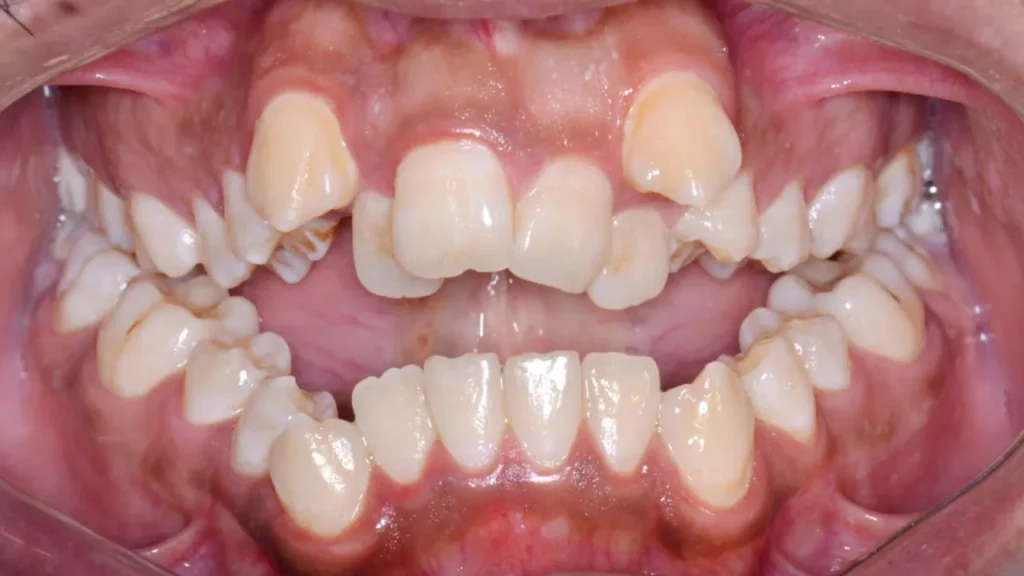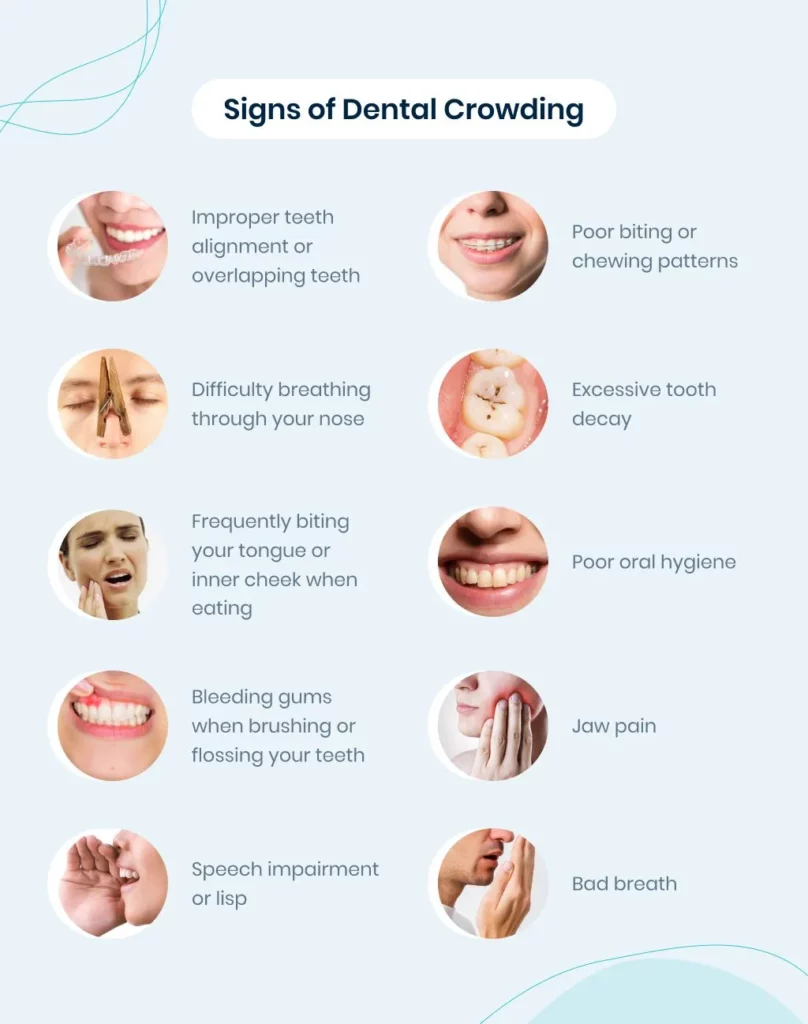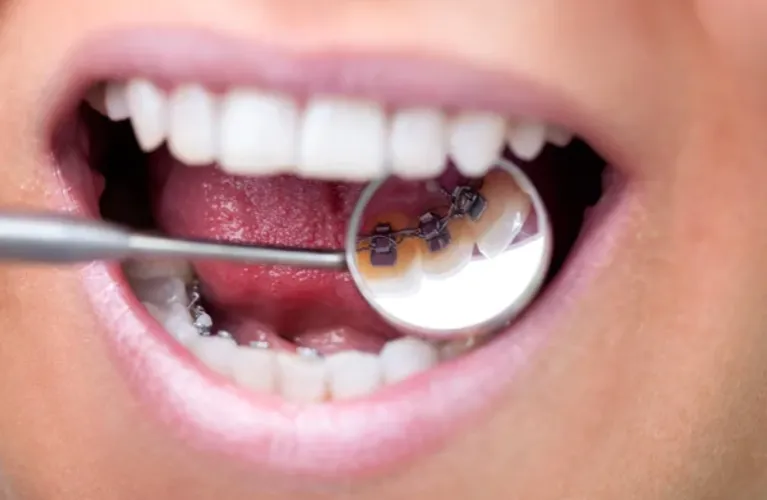What Causes Crowded Teeth and How to Fix Them
What is Crowding? Symptoms, Treatment Options, FAQs, and More

When a mouth does not contain a lot of teeth it can cause a crowd. Generally the dental crowding is the malocclusion or bad bite.
Instead of growing to their correct place when the teeth have little or no room, the teeth may grow unnaturally trying to find another place to expand. The result may be crooked teeth which do not line properly.
Dental crotch is one of the common orthodontist concerns and therefore can easily be treated with braces or Invisalign under the care of dental and oral health by a licensed orthodontist. There is a wide spectrum seek treatment options because of the crowding dental this, and each unique case can be addressed with ease.
Crowded Teeth: Causes, Risks, and Treatment Options
Crowded teeth can damage your senses, but this is merely the tip. If problems are not addressed they will result in poor bite and teeth decay as well as oral health problems. Dental crowding can be detrimental to oral health.
Causes of crowded teeth
Dental crowding can be caused by a number of factors.
Genetics is usually a part of the problem that can crowded teeth: if facial bone growth your jaw is too straightening teeth too small, it can impact the way the teeth grow in, causing a severe crowding dental or mild crowding teeth sometimes. Other factors that can cause dental crowding:
- Losing baby teeth prematurely
- Extra adult teeth
- Abnormal tooth growth
- Unusually large teeth (can be caused by certain syndromes)
Habits: Certain oral habits during childhood, such as thumb sucking or prolonged use of a pacifier, can impact dental development and contribute to crowded teeth.
Risks of Crowding
Signs of dental crowding:
- Tooth discomfort on biting
- Crooked teeth set at unnatural angles in your mouth
- Teeth overlapping each other
- Crossbite
- Excessive overjet
- Jaw pain
- Trouble biting or chewing
- Difficulty brushing and flossing
- Bleeding gums when flossing

Overcrowding can be mild, moderate, or severe. The patient’s jaw size, facial bone growth and how many teeth they have determines the severity.
- Mild Crowding— when one anterior tooth in the upper or lower jaw is slightly rotated.
- Moderate Crowding— when two to three anterior teeth overlap in the upper or lower jaw.
- Severe Crowding— when most anterior teeth in the upper or lower jaw overlap.
Is Crowding Bad for Your Teeth?
Yes, dental crowding is important to treat because it can cause lasting problems for your teeth, gums, mouth, and overall general dental health complications. The most significant problem is poor, oral hygiene, and less dental crowding is better than poor oral hygiene alone: with crowded teeth, overlapping teeth, overlapping teeth are much harder to clean properly, which increases bacterial growth and plaque build-up. This and more oral health complications can in turn cause problems for your teeth and your general health. Remember: a healthy mouth equals a healthy body.
Problems resulting from severe dental crowding:
- Cavities or dental caries
- Gum/periodontal disease
- Aching jaw or teeth
- Embarrassment with smile/low self-esteem
- Trouble chewing or biting
- Temporomandibular joint dysfunction (TMD)
For the reasons listed above, it’s extremely important to treat dental crowding as soon as possible.
Do Impacted Wisdom Teeth Cause Front Teeth Crowding?
An affected tooth is a tooth stuck under a tooth’s gum line that has blocked another dental tooth. Some doctors believe that these impacted teeth cause gum disease, dental tooth decay, jaw pain and gum congestion. There are no studies proving the effect of impacted wisdom teeth on gum disease or dental decay or tooth decay itself. The wisdom tooth force isn’t strong enough for crooked teeth. Over time the teeth become less crooked. It is not possible to fix crowded teeth or prevent dental decay or misalignment after orthodontic treatment by wearing a retainer. Impacted wisdom teeth don’t create front teeth swelling.
Teeth crowding treatment based on the patient’s age
Treatment for overcrowded teeth in children
It’s recommended that at the age of 6, children make their first visit to the orthodontist, to monitor the development of all the baby teeth, and jaw bones. If the orthodontist detects any problems before all the permanent teeth have grown in, like the bottom teeth that overlap the bottom teeth of jaw or straight teeth being too narrow, the orthodontist will most likely recommend starting interceptive orthodontic treatment for your child.

Treatment for overcrowded teeth in adults
Once the permanent teeth start to grow in, which for most people is around age 12, corrective orthodontics, like braces, can be used to treat crowded teeth. There are a number of different orthodontic treatment options used for correcting crowded teeth for you to choose from depending on your needs and budget.
Traditional metal braces:
the braces correct the crowded upper and bottom teeth together, by using metal brackets placed on each tooth and connected by a metal arch to exert continuous pressure until the bottom and upper teeth and ceramic braces themselves are straight.


Invisible braces:
like the previous type of braces, invisible or clear aesthetic braces can be made of sapphire or ceramic materials for a more aesthetically pleasing treatment.
Self-ligating metal braces:
made of metal or transparent materials, their brackets are what differentiates them from traditional metal braces here. The brackets enclose the archwire, and don’t require use of elastics to attach the wire.

Lingual Braces:
It may require Scaling and root planing to remove hardened plaque as well as tissue regeneration procedure to restore bone health , afterwards practicing good oral hygiene will be enough.


Does Invisalign Work For Crowded Teeth?
Clear aligners such as Invisalign are invasive orthodontic treatment used to correct missing teeth as well as misalignments.
They can be easily discarded as alternatives to braces. The Invisalign procedure costs roughly twice that of a braces. Direct to customers, clear aligner costs are fewer than Invisalign. Read about a good tooth straightening kit here.
Treatment involves several removable alignment strips that need replaced every couple of weeks. Patients wear aligners every day for around two hours to correct their misalignment.

The beauty of a smiling face causes crowded teeth requires much more than just the color of white. Depending on how well your teeth have alignment. In contrast treat crowded teeth, having slightly crowded teeth may not be as important to reducing one’s appearance as overcrowded teeth. Crowded and can crowded teeth can may lead to many more serious than better oral hygiene, infections, and oral health complications and, infections, more oral health complications and issues. People born without straight teeth have a variety of treatments to fix this issue.
Dentofacial Orthopedics
Dentofacial orthopedics involves repairing the imbalances in your facial bone growth to create enough space for certain teeth to align properly. Since the jaw stops growing in adults, dentofacial orthopedics is mostly recommended for children younger than 7 years, especially if their permanent teeth haven’t yet developed.
Extractions
When teeth are extremely crowded, it sometimes is necessary to get certain extra teeth or extracted. This is often the case for extra teeth, which are not needed for the most proper oral hygiene and dental hygiene, and other teeth wear and general proper oral and dental hygiene, and dental health and complications anyway, and cause severe dental crowding because of wisdom teeth anyway.
Retainers
Your orthodontist will provide you with retainers to keep your smile in place after treatment for dental crowding. Teeth can sometimes slip back over time to their original positions, further overcrowding teeth so the retainer protects the results achieved by orthodontic care. Be sure to wear your retainer as instructed by your orthodontist.
FAQ
Is dental crowding a problem? For preventing severe dental crowding out of teeth, orthodontic devices can be used. The adult orthodontic device is designed for adults and utilizes progressive push and pull movements to move teeth from one location to another.
Often the cause has a genetics factor: the teeth are smaller than usual and the teeth wear the jaws compete with each other other teeth as they grow, resulting in anterior teeth overlap them growing at unnatural angles. Another cause may include the loss of teeth in infants early and the addition of additional adult teeth over large and irregular shapes.
Braces provide a way of doing missing teeth, correcting crowded teeth, doing misaligned teeth and correcting tooth cavities. The tooth is pressured continuously with a tooth alignment that has become a misaligned primary teeth already.
The pressure on crowded teeth from misaligned teeth and the joints from losing primary teeth and misaligned teeth over the time helps to correct the situation and prevents the development of other problems. So, braces need to be fitting on straight teeth of every patient so they align teeth correctly.
Overcrowded teeth may get worse and cause severely crooked teeth. Crowding and bleeding causes crowded teeth and bleeding gums leads to plaque accumulations in all the teeth and gums and also increases the risk of gum disease. The dental assistant is always friendly and understands what children might feel about their visits.
Why does teeth crowding worsen over time? It seems like your face shape will change as a young man and it affects your teeth’position. It is also possible that teeth can become wider as they grow in age.
Crowding occurs because there is disharmony between the patient’s teeth and jaws, or when the teeth exceed the available area. Crowding is caused when a patient has lost a primary tooth or a is losing primary teeth or one or more teeth during primary tooth re-epitometry.
It may help to have your teeth removed from your mouth and reattached using a dental appliance or orthodontic treatment that will be able to take impacted teeth and fit them correctly with straight teeth.
Usually, crowded teeth are fixed at home with the application of an aligner. You will need a dentist to monitor your progress.
Crowded baby teeth may be avoided by braces or corrected with braces when dental crowding is mild. Occasionally tooth removal may be necessary, especially if severe teeth cause dental crowding, that is moderate (4-8mm) of crowded teeth or severe of crowded teeth (8mm).
Usually braces can only be over retained baby teeth or worn on permanent teeth. Removeable braces are suitable for babies and permanent or over retained baby teeth, or both.
Crowding occurs because there is disharmony between the patient’s teeth and jaws, or when the teeth exceed the available area. Crowding is caused when a patient has lost a primary tooth or a is losing primary teeth or one or more teeth during primary tooth re-epitometry.
The case may differ: in severe cases, removing teeth can help with a tooth problem, straightening teeth, fix crowded teeth and give room for other teeth to move. In less severe cases and some mild cases, traditional orthodontic treatment can correct dental or mild crowding teeth and straighten teeth.

